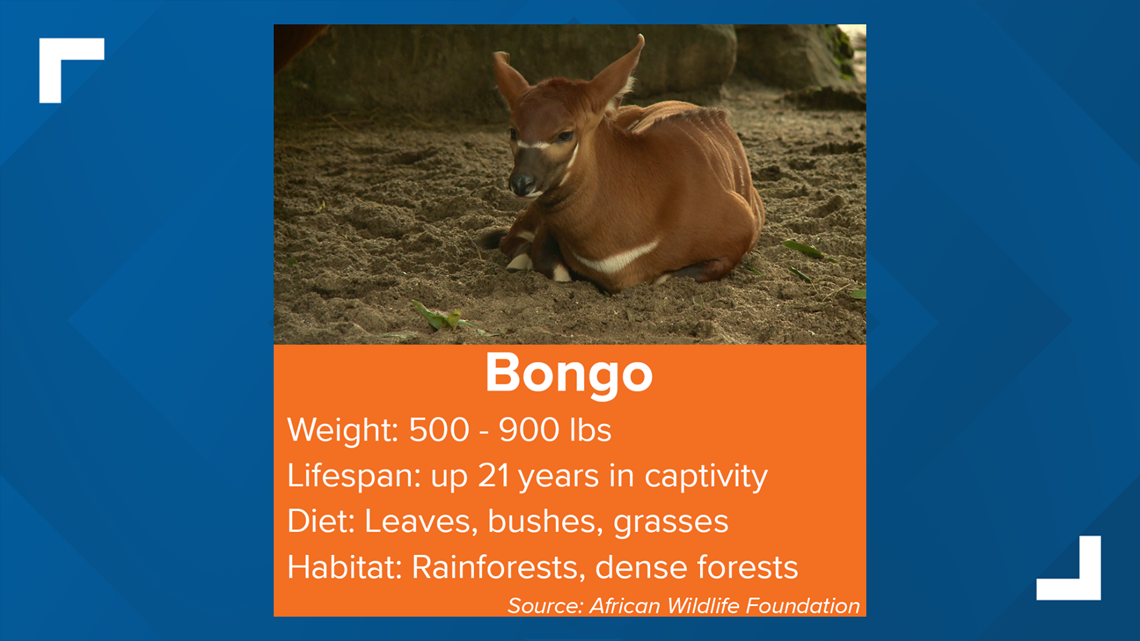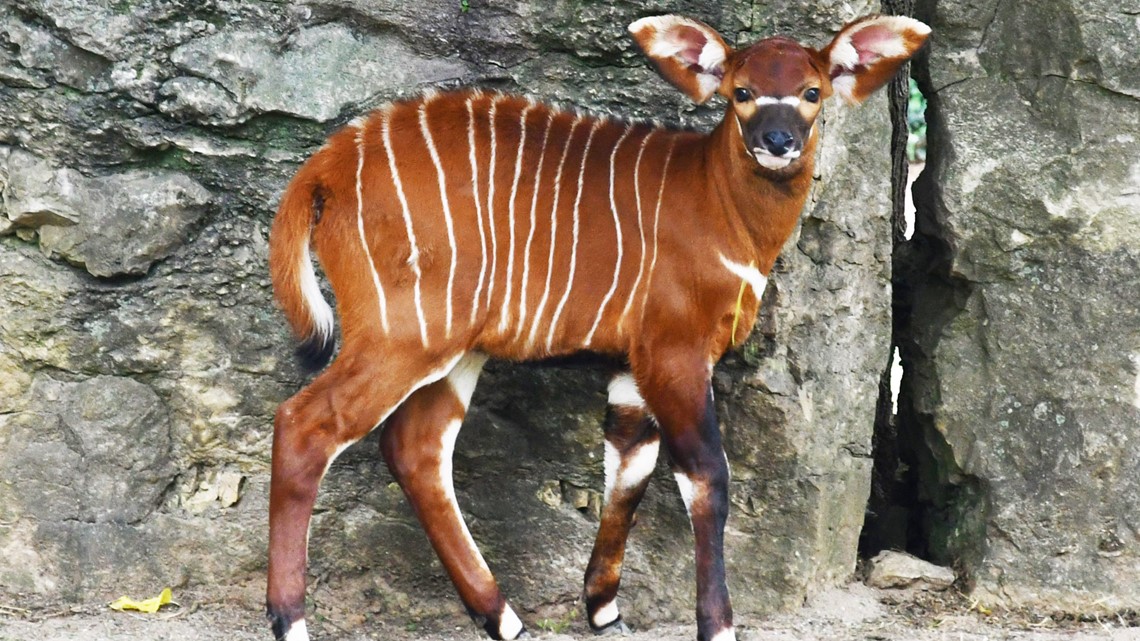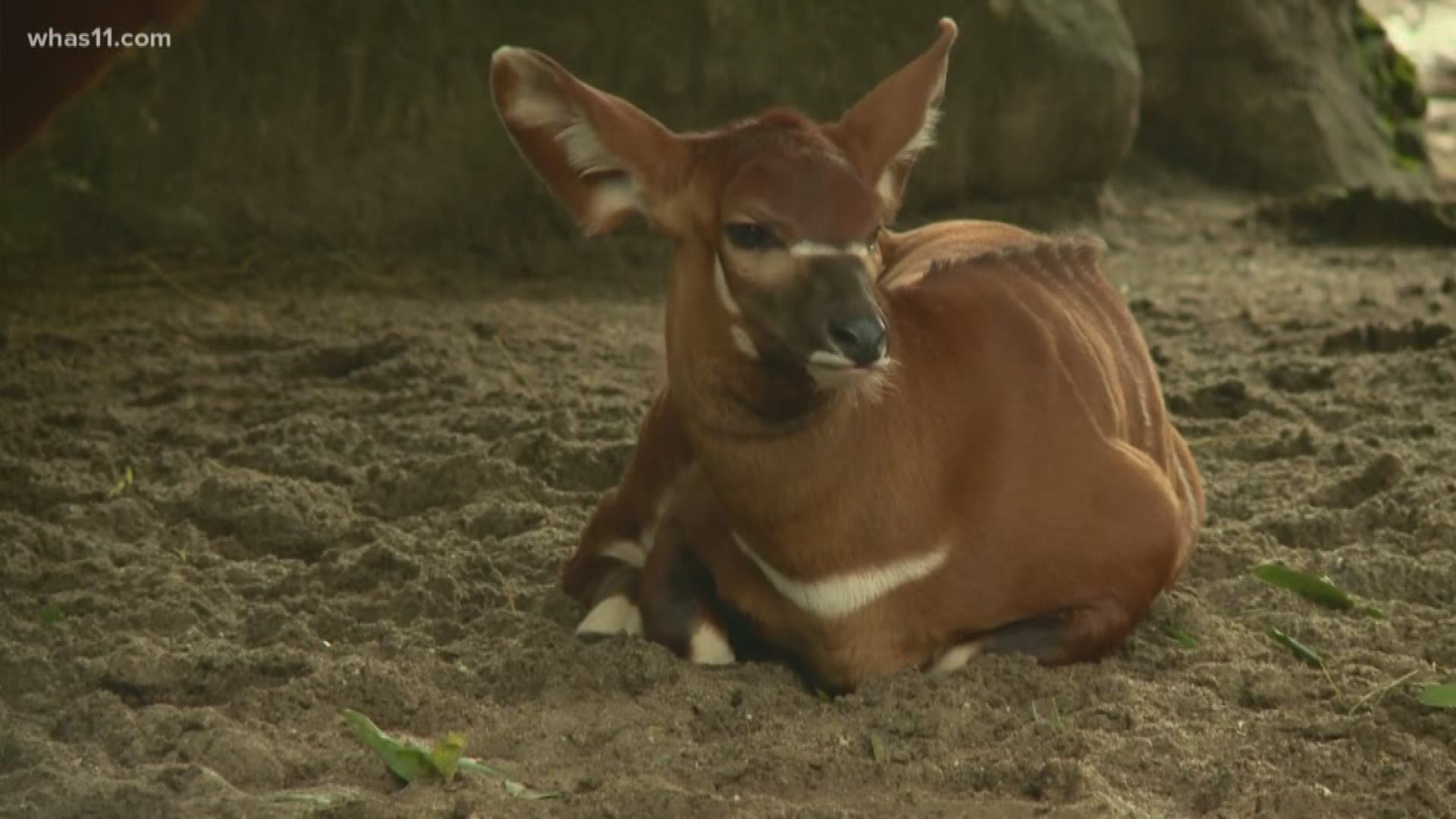LOUISVILLE, Ky. — We’re bringing back the “Creature Feature” to WHAS11 mornings, and we’re kicking it off with the newest—and adorable-est—member of the Louisville Zoo family: Groot the Baby Bongo.
Groot was born on May 19th, 2019. The Louisville Zoo tasked the community with naming him: they received hundreds of suggestions, and let people vote with their donation dollars for their favorite name, and the Guardians of the Galaxy name won out! We met with Louisville Zoo curator Michael Jones to learn more about Groot and his fellow Bongos at the zoo.


Q: Alright Michael, the first question: what the heck is a bongo?
M: So basically a bongo is a type of antelope. So there’s probably about 90 different species of antelope, and the bongo, in particular, is what we call a forest antelope. When people think of antelope, they probably think of things like wildebeest, gazelles, impalas that you see living out in these big grassy areas with giraffes; but these guys live in a deep forest, like the Congo, where gorillas and things would be.
It’s a vulnerable species. We’ve been pretty successful here at the zoo: we have five animals currently: you’ll see the three females, and the young calf, and then we have a male. We usually reproduce these about every two years. We’ll have [from] one, up to three calves at a time.


Q: Ok, so the newest calf: what personality are you seeing from this little guy?
M: Well, they’re really big babies… They’re very rambunctious. I always say they grow into their ears. They have really large ears. It’s almost like they have adult-sized ears they have to grow into.
Q: How fast is this guy going to grow? At what point is he going to reach the size of his parents out there?
M: Well, you don’t really see any horns now, but those horns will start coming in pretty quick. But, believe it or not, by the time they’re about two to three years old they’re almost the size of these adult animals. It doesn’t take very long.
Contact reporter Rob Harris at rjharris@whas11.com. Follow him on Twitter (@robharristv) and Facebook.

